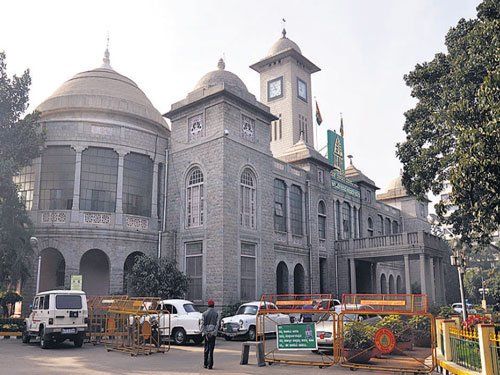Cripps Mission (1942): The falling of Singapore and Rangoon in the Second World War compelled Winston Churchill and the British war cabinet to send a high-powered mission to India under the supervision of Stafford Cripps. Churchill was against his own stance while signing the Atlantic Charter, 1941, proposed by Franklin D. Roosevelt, the then-American President. The aim of the Mission was to win the cooperation of India with Britain vis-a-vis the War. The Mission was formulated on 30 March 1942 with the offer of ‘Dominion Status’ for India.
The Mission was a complete failure, which angered the Indian nationalists, leading to the establishment of the Quit India Movement.
Cripps Mission Reasons
The Cripps Mission was sent after the decision taken by the British War Cabinet in 1942 to grant Dominion Status to India after the War and equal treatment to the Indians on par with other dominions such as Canada and Australia. It was sent amidst the political belligerence in India on various fronts, such as the lack of faith in the British Army’s capacity to defend India against aggressive Japan and the increasing demand for a separate state by the League and Jinnah. But the most important factor was the pressure on Churchill to win the support of Indians for the British cause in the War.
- Debacles of Allied powers in the Southeast Asia and pressure on Britain:
- Churchill was against any condescension against Indians. He was against Roosevelt's administration, which had wanted to abandon imperialism through the Atlantic Charter (August 1941), also signed by Britain.
- But, by the end of 1941, the Japanese routed Southeast Asia and were knocking at the door of India after the fall of Burma.
- The Japanese threat seemed real, which not only instilled fear amongst Indians (one of the major causes of launching the Quit India Movement), but also the British Government who had to act accordingly.
- The allies (the United States, the Soviet Union, and China) put pressure on Britain to seek Indian cooperation.
- Failure of August Offer and the Effect of Individual Satyagraha:
- Indians (but not Gandhi) had agreed to support the British cause in the War for various reasons. In return, they wanted immediate power-sharing (including the authority in military strategy) and the guarantee for full independence after the War.
- However, the August Offer created furore amongst Indians and, particularly, Congress and Gandhi due to the British endorsement of Jinnah's separatist stance, which caused a limited scale of protest, Individual Satyagraha. This also led the British to think about the greater delegation of power to Indians.
Cripps Mission 1942 Proposals
Based on the draft declaration prepared by the All India Committee, chaired by Attlee, Stafford Cripps came to India and proposed the following constitutional reforms:
- Dominion status: The Cripps Mission proposed to create a new Indian Union with Dominion statusafter the War, associated with the UK and other dominions, equal in every respect - domestic as well as external affairs.
- Constituent Assembly: Setting up a Constitution-making body for India after the War, whose members would be elected by the Provincial Assemblies and nominated by the rulers in the case of the Princely States. The constitution was to be drafted entirely by Indians now.
- Right to secede for the provinces: There would be provisions for any British Indian Province unwilling to accept this Constitution to either maintain its current constitutional status or frame its own constitution.
- Any province that refused to abide by the new Constitution could create its own union and constitution.
- The new Constitution-making body and the British government would negotiate a treaty to sort out matters arising out of the transfer of powers to Indian hands.
- Intact powers of the Viceroy: The Viceroy's authority would be unaffected, and British control over India's defence would continue until the War. After that, the dominion government could reorganise its own defence.
Cripps Mission Failure
The British had only undertaken this exercise to show the world that they cared about Indian sentiments rather than to do anything concrete. The Cripps Mission’s proposals fell short of appeasing Indian nationalists and ended up serving only as a US and Chinese propaganda tool. Various parties and organisations objected to the proposals on various grounds:
- Gandhi: He called Cripps Mission proposals a “Post-dated Cheque drawnon a failing bank”. This was due to the promise of granting dominion status after the end of the Second World War.
- Congress:
- The right of the Princely States to send representatives to the Constituent Assembly and authority for the Provinces to opt out of the Indian Union was not well received by Congress.
- Congress wanted immediate independence and pan-India cooperation. The offer of the “Dominion Status” was dead at that moment.
- Congress also wanted Indians to have full control over the defence.
- The Congress Working Committee rejected the Cripps’ proposals officially on 7 April 1942.
- Muslim League:
- The draft Declaration implicitly appeased the Muslim League’s demand for Pakistan by stating that any province unwilling to accept the constitution would be granted ‘the same status as the Indian Union.
- Still, the League disagreed with the proposal because it did not make a clear statement supporting the establishment of a separate state for Muslims.
- Liberals and Mahasabha: They also rejected the Cripps proposals, as they considered the secession proposals to be against the unity and security of India.
- Other: Other groups, such as Sikhs, Indian Christians, Depressed Classes, and Anglo-Indians, did not find anything in the proposals for their interests.
Cripps Mission Significance
The Cripps Mission was a critical turning point in India's struggle for independence. While it aimed to find a middle ground for India's future governance and cooperation during the war, it fell short of satisfying the aspirations of Indian leaders.
- A step ahead of the August Offer: Now, instead of "mainly" in Indian hands, as stated in the August Offer, the constitution-making process was to be “entirely” under the control of Indians.
- There was a detailed plan offered for the constituent assembly. In the interim, a sizable portion of the administration was made available to Indians.
- Elements of discord and disunity: Any province had the choice to create its own constitution, which served as the basis for India's division. It also had the provision for Free India to leave the Commonwealth.
- British could not step backwards: The British now realised that they could not go backwards from the offers made by the Cripps Mission in spite of its failure.
- The offers for Indians to have a national government, own constitutional-making body, etc., were too much for Churchill and Britain, given their imperialist nature.
- Quit India Movement:
- Following the Cripps Mission's failure, the Quit India Movement demonstrated that Indian nationalists were no longer eager to wait for independence.
- The Movement then surpassed all the earlier national movements in terms of popular participation and extent.
- It was now only a matter of time before British rule in India came to an end.
Last updated on December, 2025
→ Check out the latest UPSC Syllabus 2026 here.
→ Join Vajiram & Ravi’s Interview Guidance Programme for expert help to crack your final UPSC stage.
→ UPSC Mains Result 2025 is now out.
→ UPSC Notification 2026 is scheduled to be released on January 14, 2026.
→ UPSC Calendar 2026 is released on 15th May, 2025.
→ The UPSC Vacancy 2025 were released 1129, out of which 979 were for UPSC CSE and remaining 150 are for UPSC IFoS.
→ UPSC Prelims 2026 will be conducted on 24th May, 2026 & UPSC Mains 2026 will be conducted on 21st August 2026.
→ The UPSC Selection Process is of 3 stages-Prelims, Mains and Interview.
→ UPSC Result 2024 is released with latest UPSC Marksheet 2024. Check Now!
→ UPSC Prelims Result 2025 is out now for the CSE held on 25 May 2025.
→ UPSC Toppers List 2024 is released now. Shakti Dubey is UPSC AIR 1 2024 Topper.
→ UPSC Prelims Question Paper 2025 and Unofficial Prelims Answer Key 2025 are available now.
→ UPSC Mains Question Paper 2025 is out for Essay, GS 1, 2, 3 & GS 4.
→ UPSC Mains Indian Language Question Paper 2025 is now out.
→ UPSC Mains Optional Question Paper 2025 is now out.
→ Also check Best IAS Coaching in Delhi
Cripps Mission FAQs
Q1. What was the Cripps Mission?+
Q2. Who was the viceroy during the Cripps mission?+
Q3. What is the distinction between the Cripps Mission and the August Offer?+
Q4. Why did the Indian National Congress reject the Cripps Mission? +
Q5. Who called the Cripps Mission a “Post-dated cheque”?+
Tags: cripps mission 1942 quest

















